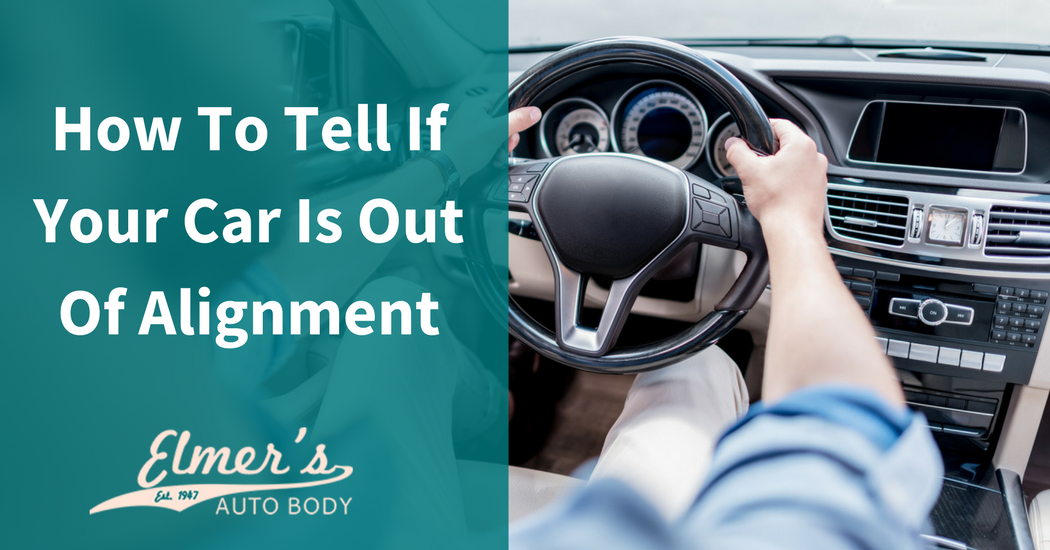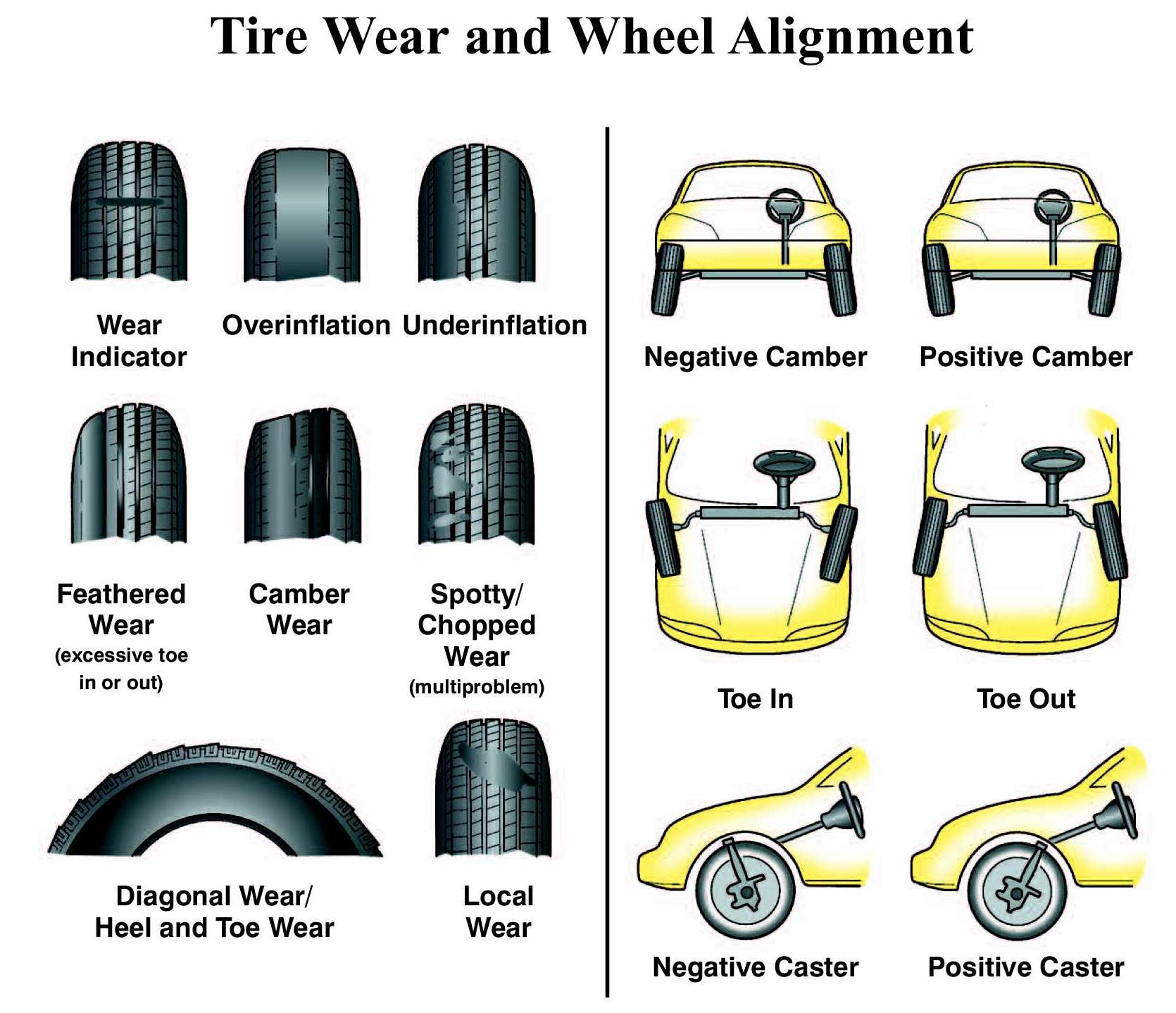You can tell your alignment is off if your car pulls to one side or the steering wheel vibrates. Proper wheel alignment is crucial for a smooth and safe driving experience.
When your vehicle’s alignment is off, it can lead to uneven tire wear, poor handling, and reduced fuel efficiency. The most common signs of misalignment include the car pulling to one side, steering wheel vibration, and uneven tire wear. If you notice any of these symptoms, it’s wise to have a professional inspect and correct your vehicle’s alignment.
Regular alignment checks and adjustments can prolong the lifespan of your tires and ensure optimal performance on the road. It’s essential to pay attention to these signs to prevent potential damage and maintain a safe driving environment for you and others on the road.
Signs Of Misaligned Alignment
Steering Wheel Pulls To One Side
When driving, if the steering wheel forcefully shifts to one side, it indicates a potential alignment issue.
Uneven Tire Wear
Uneven tire wear, such as smooth patches, worn edges, or irregular patterns, highlights misaligned alignment.
Vehicle Drifts Or Veers
If the vehicle drifts or veers to a specific direction, alignment may need adjustment.
Vibrations Or Shaking
Unusual vibrations or shaking while driving are indicative of alignment issues.
Squealing Tires
Squealing tires can result from alignment problems, emphasizing the need for inspection.
Causes Of Alignment Issues
Alignment issues in vehicles can arise due to several factors, and it’s important to be aware of these potential causes in order to effectively address and rectify the problem. The most common reasons for vehicle alignment problems include:
Pot Holes And Rough Roads
Pot holes and rough roads can significantly impact a vehicle’s alignment. When a vehicle hits a deep pot hole or encounters a particularly uneven stretch of road, it can lead to the displacement of the wheel alignment. The jarring impact can cause misalignment in the suspension and steering components, resulting in uneven tire wear and handling issues.
Suspension Wear
Suspension wear due to continuous use and aging can also contribute to alignment problems. Over time, the suspension components (such as shocks, struts, and control arms) can wear out, leading to misalignment. Regular inspection and maintenance of the suspension system are essential to prevent these issues.
Improper Installation Of Suspension Components
Improperly installed suspension components can cause alignment problems as well. If the suspension parts are not installed correctly or if the alignment is not properly set after installation, it can lead to misalignment issues. It’s crucial to ensure that suspension components are installed and aligned by qualified professionals using the correct procedures and specifications.
Accidents Or Collisions
Accidents or collisions can cause significant damage to a vehicle’s alignment. The impact from a collision can knock the wheels out of alignment and damage suspension components, resulting in the need for realignment and potential repairs to the affected parts.
Importance Of Proper Alignment
Proper alignment of your vehicle is crucial to ensure a smooth and safe driving experience. When your vehicle’s wheels are not properly aligned, it can lead to various issues that affect not only the performance of your vehicle but also your safety on the road. Understanding the importance of proper alignment can help you recognize the signs of misalignment and take necessary corrective measures to maintain your vehicle’s optimal performance.
Improved Safety
Proper alignment enhances the safety of your vehicle by ensuring that your tires maintain optimal contact with the road surface. When the wheels are aligned, your vehicle’s handling and stability are improved, reducing the risk of skidding or loss of control, especially during emergency maneuvers.
Extended Tire Life
Correct alignment significantly extends the life of your tires by reducing uneven tire wear. When your wheels are properly aligned, the tires wear out evenly, preventing premature replacement and saving you money in the long run.
Enhanced Vehicle Performance
Optimal alignment contributes to the overall performance of your vehicle. It ensures that your vehicle drives straight and responds accurately to steering inputs, providing a smooth driving experience and minimizing unnecessary wear on suspension components.
Better Fuel Efficiency
Properly aligned wheels reduce rolling resistance, which in turn helps improve your vehicle’s fuel efficiency. With less resistance on the road, your vehicle requires less energy to move forward, resulting in better mileage and reduced fuel consumption.

Credit: meridianautocare.com
How To Check Alignment
Discovering if your alignment is off requires a few simple checks. Look out for uneven tire wear, drifting to one side while driving, or a crooked steering wheel, as these are all indicators that your alignment may need adjustment. A professional inspection can confirm and resolve any alignment issues.
How to Check Alignment Visual Inspection Checking the alignment of your vehicle is crucial for optimal performance and safety. Visual inspection is the first step in detecting alignment issues. Steering Wheel Test Perform the steering wheel test by driving on a straight, flat road. Ensure the steering wheel is centered and the vehicle doesn’t pull to one side. Tire Tread Inspection Inspect the tire treads for uneven wear patterns which may indicate alignment problems. Look for patches of excessive wear. Professional Wheel Alignment A professional wheel alignment is recommended if you notice any signs of misalignment. Experts use specialized equipment to ensure precise adjustments.Ways To Fix Alignment
If you notice that your car is not driving as smoothly as before or if you feel it pulling to one side, there’s a good chance that your alignment is off. Alignment refers to the angle and position of your wheels in relation to your car. When the alignment is off, it can cause uneven tire wear, decreased fuel efficiency, and poor handling. Fortunately, there are several ways to fix alignment issues and get your car back on track. In this article, we will discuss three common ways to fix alignment: adjusting camber, caster, and toe; wheel alignment service; and suspension repairs.
Adjusting Camber, Caster, And Toe
One way to fix alignment issues is by adjusting the camber, caster, and toe angles of your wheels. These angles determine the direction and stability of your tires. If any of these angles are off, it can result in uneven tire wear and poor handling. Adjusting them back to their recommended specifications can improve your car’s alignment and overall performance.
Wheel Alignment Service
If you’re not confident in adjusting the angles yourself, it’s best to seek professional help through a wheel alignment service. A wheel alignment service is performed by trained technicians using specialized equipment to measure and adjust the angles of your wheels. They will evaluate the current alignment of your car and make the necessary adjustments to bring it back to its optimal state. This service ensures that the angles are precisely aligned according to your car manufacturer’s specifications, ensuring optimal performance and safety on the road.
Suspension Repairs
In some cases, an alignment issue may be a result of suspension problems. Worn-out suspension components can cause the wheels to be misaligned. If your car has been experiencing rough rides or if you notice that the suspension feels loose, it may be time for suspension repairs. Replacing worn components, such as struts, shocks, or control arms, can not only fix alignment problems but also improve the overall ride quality and handling of your vehicle.
When it comes to fixing alignment issues, these three methods are commonly used: adjusting camber, caster, and toe; getting a professional wheel alignment service; and performing suspension repairs if necessary. By addressing alignment problems promptly, you can ensure that your car performs optimally, improves fuel efficiency, and extends the lifespan of your tires. If you suspect that your alignment is off, don’t hesitate to take action and get it fixed for a smoother, safer driving experience.

Credit: elmersautobody.com

Credit: sierracarcare.wordpress.com
Frequently Asked Questions Of How To Tell Alignment Is Off
What Does It Feel Like When Your Alignment Is Off?
When your alignment is off, you may feel pain, stiffness, or discomfort in the affected area. Your movements may be limited or uneven.
How Do I Check My Alignment?
To check your alignment, first ensure your tires are properly inflated. Then, park on a level surface and look for any uneven wear on the tires. Next, inspect the steering wheel for off-center positioning. Lastly, schedule a professional alignment if you notice any issues.
How Do You Tell If Your Tires Are Out Of Alignment?
You can tell if your tires are out of alignment if you notice uneven tread wear, your vehicle pulls to one side, or the steering wheel vibrates. It’s important to have your alignment checked regularly to ensure optimal safety and performance of your vehicle.
What Does It Sound Like When Your Alignment Is Off?
When your alignment is off, it may sound like squealing, vibrations, or pulling to one side.
Faq 1: Why Is It Important To Check Alignment Regularly?
Regular alignment checks ensure optimal vehicle performance, prevent premature tire wear, and enhance safety on the road.
Faq 2: What Are The Signs That My Vehicle’s Alignment Is Off?
Uneven tire wear, pulling to one side, steering wheel vibration, and drifting are common signs that your alignment needs attention.
Faq 3: How Can I Tell If My Vehicle’s Alignment Is Off?
You can check your alignment by observing abnormal tire wear, how your vehicle handles, and if the steering wheel is centered when driving straight.
Conclusion
Ensuring proper alignment of your vehicle is crucial for a smooth driving experience. Watch out for signs like uneven tire wear or steering pull. Regular maintenance can prevent costly repairs down the line. Stay proactive in detecting alignment issues to enhance safety and performance on the road.
- How Much Does a Ford 9N Tractor Weigh - May 20, 2024
- How Many of My Exact Car were Made: Uncovering the Rarity - May 20, 2024
- How to Find Out What Someone Drives: Discover the Truth - May 20, 2024



